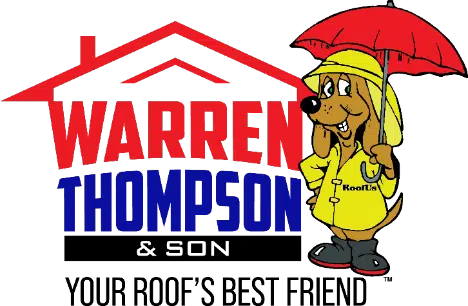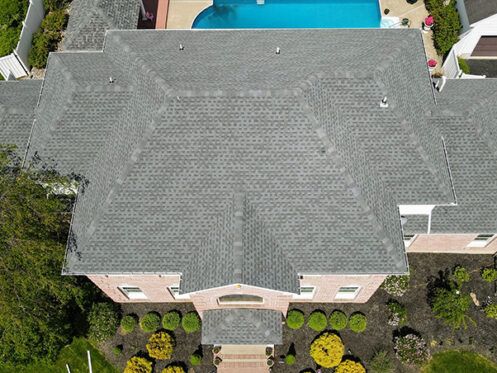Many commercial buildings have either a flat roof or a roof with only a very slight slope. With this type of roof, your options are more limited since common roofing materials like asphalt shingles or metal roof sheeting won’t work. If your commercial building has a flat or low-slope roof, membrane roofing is typically the best option for ensuring that it is waterproof and doesn’t leak.
Two of the most popular options for membrane roofing are TPO and EPDM. This article will explain what TPO and EPDM are and the pros and cons of each one to help you determine which is the superior choice for your commercial building.
TPO and EPDM Roofing Explained
Both TPO and EPDM are single-ply roofing membranes designed specifically for flat and low-slope roofs. Single-ply means the roof is made of just one layer, which makes it lighter in weight, less expensive and easier to install than two-ply or multi-layer roofing membranes.
The main differences between TPO and EPDM are what they are made of and their color, both of which impact the roof in many ways. TPO (thermoplastic polyolefin) is a resin blend that is made of a plastic polymer mixed with some type of elastomer such as natural or synthetic rubber. EPDM (ethylene propylene diene monomer) is a type of synthetic rubber. TPO roofing membrane is usually white. Most EPDM is black, but it is also available in gray.
TPO Pros and Cons
TPO is a relatively new type of roofing material that has quickly grown in popularity. Part of the reason for this is that it is relatively inexpensive compared to many other commercial roofing materials. This is because the material is cheap to manufacture and also relatively quick and easy to install since it is so lightweight. Another advantage of TPO is that it is highly flexible, which makes it quite resistant to impact and water damage as well as puncturing. It is also resistant to biological growth, which means you shouldn’t have to worry about issues with mold or algae on the roof.
TPO is also superior to many other roofing membranes in terms of energy efficiency. The fact that the membrane is usually white means that it reflects the majority of sunlight and doesn’t absorb lots of heat. Black or dark membranes absorb lots of heat since they don’t reflect sunlight. This heat gain causes the building to get much warmer during the hotter parts of the year. By reflecting sunlight, TPO will help keep the building cooler so that your cooling costs aren’t as high. The white color also makes it more resistant to UV rays, which helps prevent it from being damaged by the sun.
The biggest drawback to TPO is that it most likely won’t last as long as other roofing membranes. Since TPO hasn’t been around all that long, its expected lifespan isn’t yet fully known. This is partly because there are still many variances from one manufacturer to the next in how their products are made, which in turn leads to differences in quality. TPO has improved quite a bit since it was first introduced in the 1990s, but some companies are still perfecting their manufacturing process. This means that some TPO roofing will often only last for around 10 years while others will need to be replaced after around 25 years.
Although TPO reflects sunlight, it is still often prone to damage from extreme heat. When exposed to extreme heat for a prolonged period, the flashings and seams that hold each piece of membrane together will often start to pull apart. If this issue arises and isn’t taken care of quickly, it will usually lead to the roof starting to leak in various places. Extreme heat can also cause the top laminated layer of the membrane to start cracking, and these cracks reduce the membrane’s strength and make it more susceptible to water and impact damage.
EPDM Pros and Cons
EPDM roofing is also fairly inexpensive compared to most other options and typically costs around the same as TPO. However, this depends on how it is installed since some installation methods are more costly but make the roof more durable. As with TPO, EPDM is lightweight and comes in wide rolls, which significantly cuts down on installation time and cost compared to many other commercial roofing options.
By far one of the biggest advantages of EPDM roofing is its long life expectancy. An EPDM roof will usually last for 40 years or more when installed and maintained properly, which is much longer than any other single-ply roofing membrane. Since EPDM comes in wide rolls, the roof has fewer seams. This means that there are fewer places where the roof can fail and start leaking. It also makes the roof easier to maintain and repair. If the membrane gets damaged, it can easily be patched and repaired to extend the life of the roof. EPDM is also one of the most environmentally friendly options since it is fully recyclable.
Like any roofing material, EPDM does have some drawbacks as well. Although it is durable and lasts a long time, it tends to become a bit more brittle as it ages. This eventually leads to it becoming more susceptible to damage from hail, heavy winds or even just walking on it. If the roof isn’t designed correctly or the membrane isn’t installed properly, EPDM can also have issues where the membrane shrinks and pulls apart at the seams. A similar issue is that the adhesive used to glue or bond the seams of an EPDM roof also dries out and weakens over time, which can again lead to leaks.
The fact that EPDM is black or gray means that it can also start to look unsightly over time as dust and debris collect on the roof. However, this is merely a cosmetic or an aesthetic issue that can easily be overcome by having the roof cleaned and maintained.
How to Know Which Membrane Is the Best Choice for Your Roof
When comparing TPO and EPDM side by side, each one has an advantage in certain areas. Although both types cost around the same price to install, EPDM is a much more cost-effective option since it lasts much longer. On the other hand, TPO is more resistant to impact damage and puncturing. The seams on a TPO roof are also around four times stronger than on an EPDM roof. Since the seams on an EPDM roof are either taped or glued together with adhesive, the roof will typically require more maintenance compared to a TPO roof.
Comparing the energy efficiency of TPO and EPDM is a bit more difficult since it varies depending on the local climate. TPO is the more energy-efficient option in hotter climates since it reflects sunlight and minimizes heat gain. EPDM is the more energy-efficient choice for colder climates since all of the heat it absorbs will keep the building warmer in winter and reduce your heating costs.
If you’re considering a TPO or an EPDM roof for your commercial property in Alpha or a surrounding area, Warren Thompson & Son Roofing & Siding is the one to trust. We also install PVC and metal roofing for commercial buildings, and we can take care of your roof repair, roof inspection, gutter and siding needs as well. To learn more about your options for commercial roof installation, contact us today.

